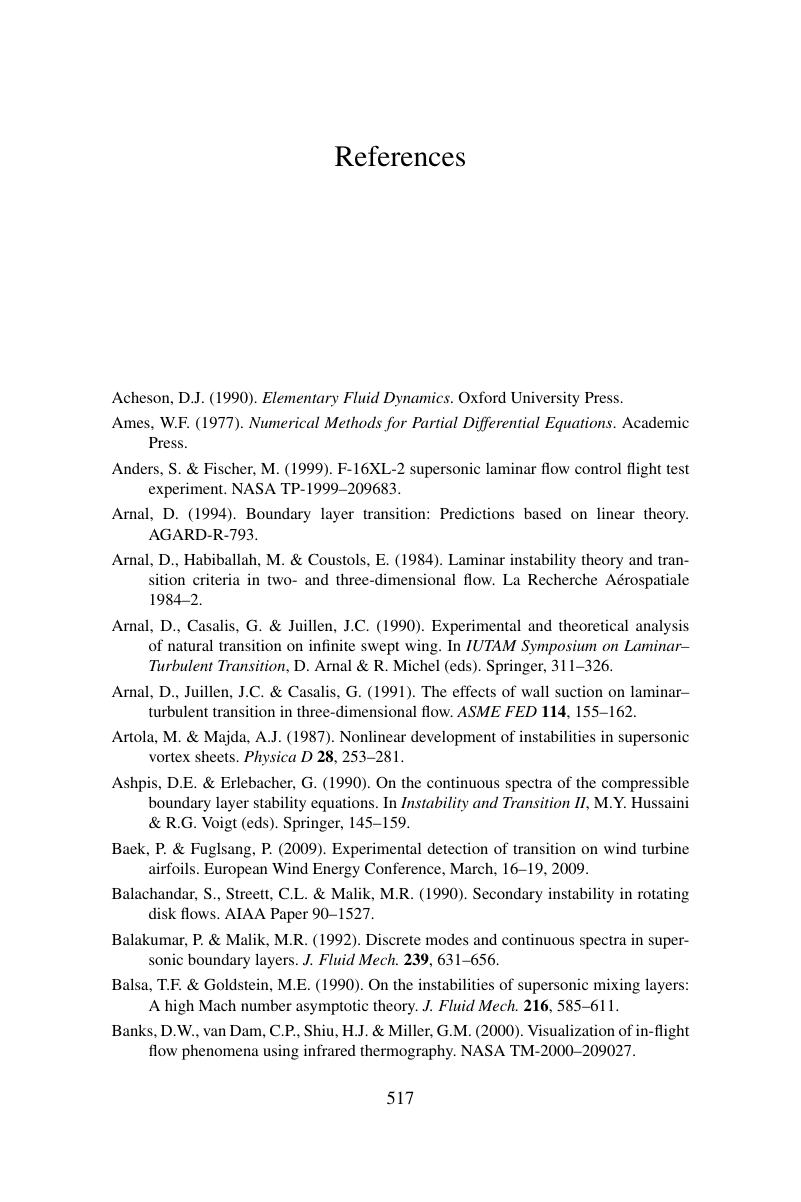Book contents
- Frontmatter
- Contents
- Preface to the Second Edition
- Preface
- 1 Introduction and Problem Formulation
- 2 Temporal Stability of Inviscid Incompressible Flows
- 3 Temporal Stability of Viscous Incompressible Flows
- 4 Spatial Stability of Incompressible Flows
- 5 Stability of Compressible Flows
- 6 Centrifugal Stability
- 7 Geophysical Flow
- 8 Transient Dynamics
- 9 Nonlinear Stability
- 10 Transition and Receptivity
- 11 Direct Numerical Simulation
- 12 Flow Control and Optimization
- 13 Investigating Hydrodynamic Instabilities with Experiments
- Appendix A Mathematical Formulas
- Appendix B Numerical Methods
- Appendix C Solutions to Exercises
- References
- Author Index
- Subject Index
- References
References
Published online by Cambridge University Press: 22 November 2018
- Frontmatter
- Contents
- Preface to the Second Edition
- Preface
- 1 Introduction and Problem Formulation
- 2 Temporal Stability of Inviscid Incompressible Flows
- 3 Temporal Stability of Viscous Incompressible Flows
- 4 Spatial Stability of Incompressible Flows
- 5 Stability of Compressible Flows
- 6 Centrifugal Stability
- 7 Geophysical Flow
- 8 Transient Dynamics
- 9 Nonlinear Stability
- 10 Transition and Receptivity
- 11 Direct Numerical Simulation
- 12 Flow Control and Optimization
- 13 Investigating Hydrodynamic Instabilities with Experiments
- Appendix A Mathematical Formulas
- Appendix B Numerical Methods
- Appendix C Solutions to Exercises
- References
- Author Index
- Subject Index
- References
Summary

- Type
- Chapter
- Information
- Theory and Computation in Hydrodynamic Stability , pp. 517 - 543Publisher: Cambridge University PressPrint publication year: 2018



